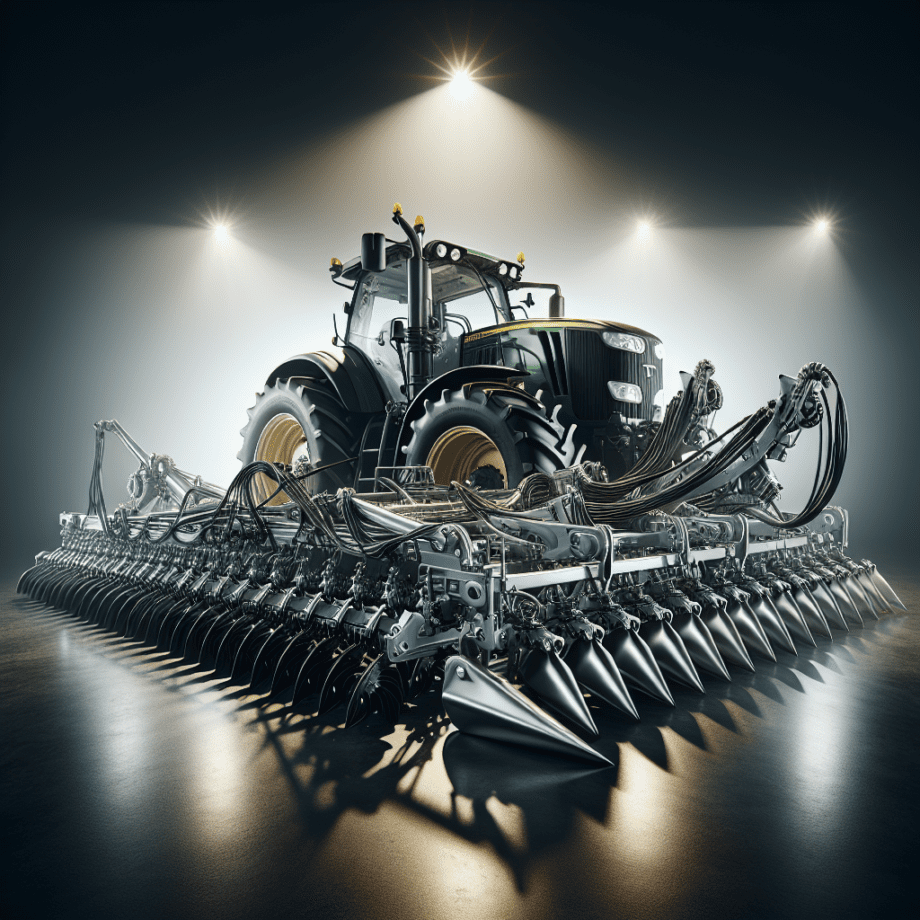Tractor attachments and implements play a crucial role in expanding the capabilities of modern agricultural machinery. These tools not only enhance the efficiency of farming operations but also allow for a wide range of tasks to be performed with a single tractor. This article delves into the various types of tractor attachments and implements, their applications, and the benefits they bring to the agricultural sector.
Types of Tractor Attachments and Implements
Tractor attachments and implements come in a variety of forms, each designed to perform specific tasks. Understanding the different types available can help farmers choose the right tools for their needs.
Plows
Plows are essential for preparing the soil for planting. They break up the soil, turning it over to bury crop residues and weeds. There are several types of plows, including moldboard plows, chisel plows, and disc plows, each suited for different soil conditions and farming practices.
Harrows
Harrows are used to break up and smooth out the surface of the soil after plowing. They help to create a fine seedbed, which is crucial for the successful germination of seeds. Common types of harrows include disc harrows, tine harrows, and chain harrows.
Seeders and Planters
Seeders and planters are designed to plant seeds at precise depths and spacing, ensuring optimal growth conditions. These implements can be used for a variety of crops, from grains to vegetables. Precision seeders and air seeders are popular choices for modern farming operations.
Sprayers
Sprayers are used to apply pesticides, herbicides, and fertilizers to crops. They come in various sizes and configurations, from small, handheld units to large, tractor-mounted systems. Sprayers help to protect crops from pests and diseases while promoting healthy growth.
Mowers and Cutters
Mowers and cutters are used to manage vegetation, whether it’s for harvesting hay or maintaining pastures. Rotary mowers, flail mowers, and sickle bar mowers are common types, each suited for different cutting tasks and vegetation types.
Balers
Balers are essential for compressing cut and raked crops, such as hay or straw, into compact bales for easy handling, transport, and storage. Round balers and square balers are the two main types, each offering different advantages depending on the specific needs of the farm.
Loaders and Backhoes
Loaders and backhoes expand the versatility of tractors by allowing them to perform tasks such as digging, lifting, and moving materials. Front-end loaders are commonly used for loading and transporting materials, while backhoes are ideal for excavation and trenching work.
Benefits of Using Tractor Attachments and Implements
The use of tractor attachments and implements offers numerous benefits to farmers, enhancing productivity and efficiency in various ways.
Increased Efficiency
By using the right attachments and implements, farmers can complete tasks more quickly and with less effort. This increased efficiency allows for more work to be done in a shorter amount of time, ultimately leading to higher productivity and profitability.
Versatility
Tractor attachments and implements enable a single tractor to perform a wide range of tasks, from plowing and planting to spraying and harvesting. This versatility reduces the need for multiple specialized machines, saving both space and money.
Cost Savings
Investing in attachments and implements can be more cost-effective than purchasing separate machines for each task. Additionally, the ability to perform multiple tasks with one tractor reduces maintenance and operational costs.
Improved Crop Yields
Using the right tools for soil preparation, planting, and crop management can lead to better crop yields. Proper soil preparation ensures optimal growing conditions, while precise planting and effective pest and weed control promote healthy crop growth.
Environmental Benefits
Modern tractor attachments and implements are designed to minimize soil disturbance and reduce the need for chemical inputs. This not only benefits the environment but also promotes sustainable farming practices.
Conclusion
Tractor attachments and implements are indispensable tools in modern agriculture, offering a wide range of capabilities that enhance the efficiency and productivity of farming operations. By understanding the different types of attachments and their applications, farmers can make informed decisions that lead to better crop yields, cost savings, and sustainable farming practices. As technology continues to advance, the development of new and improved attachments will further expand the capabilities of tractors, ensuring that they remain a vital component of the agricultural industry.
